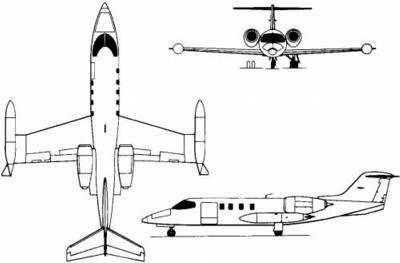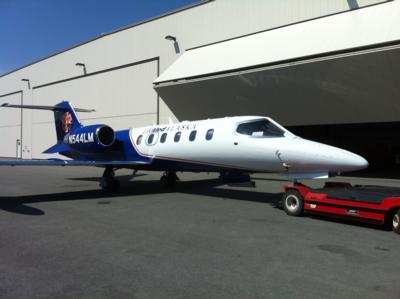Results In Wingtip Strike and Off-Runway Excursion
We aviators have the benefits of amazing technologies... but as good as these technologies are, we still need to see what's happening in the real world, when we get close up to what the real word is made of... terra firma. A Lear 35 wound up with severe windshield icing... and prevented sufficient viz to avoid a wingtip strike and subsequent off-runway excursion. Ouch...

NTSB Identification: ANC12IA024
Nonscheduled 14 CFR Part 135: Air Taxi & Commuter
Accident occurred Monday, March 05, 2012 in Anchorage, AK
Aircraft: BOMBARDIER LEARJET CORP. 35A, registration: N544LM
Injuries: 6 Uninjured.
This is preliminary information, subject to change, and may contain errors. Any errors in this report will be corrected when the final report has been completed.
On March 5, 2012, about 2154 Alaska standard time, a Bombardier Learjet, model 35A airplane, N544LM, sustained minor damage while landing on runway 7R at the Ted Stevens Anchorage International Airport, Anchorage, Alaska. The airplane was operated by Aero Air LLC., Hillsboro, Oregon, under contract to LifeMed Alaska, Anchorage, Alaska, as a instrument flight rules (IFR) patient transport flight under 14 CFR Part 135. None of the six people aboard, the airline transport certificated captain, the commercial certificated first officer, two flight paramedics, a flight nurse, and the patient, reported any injuries. Dark night, visual meteorological conditions prevailed, and an instrument flight rules (IFR) flight plan had been filed for the flight from Kenai, Alaska. The flight departed Kenai about 2130.

During an on-scene interview with the National Transportation Safety Board (NTSB) investigator-in-charge (IIC) on March 5, the captain reported that the trip to Anchorage was to be flown by the first officer. He said that as the flight neared Anchorage, they were cleared for the RNAV GPS instrument approach to runway 7R. As the flight descended below the cloud cover, the pilots discovered that the first officer's windscreen was entirely covered with ice, and she would be unable to continue the approach.
The captain said that his windscreen was also partially covered with ice, but he could still see the runway environment ahead, so he took control of the airplane to continue the approach. After he confirmed that the windscreen anti-ice system was on, which provides bleed air heat to both windscreens, he also activated the alcohol anti-ice system, which works by pumping alcohol onto the captain's windscreen, as well as the nose radome.
The captain said that as the airplane passed over the runway threshold, just before touchdown, his windscreen abruptly iced over, and he had no forward visibility as the airplane's main landing gear wheels touched down. Unable to see the runway ahead, and with limited visibility to each side, the crew attempted to activate the engine thrust-reversers to slow the landing roll, but the airplane subsequently veered to the right of runway centerline, and the right wing collided with a snow berm. The airplane pivoted to the right, continued off the runway, and came to rest embedded in a snow bank, on the right side of Runway 07R. Both pilots noted that there were no preaccident mechanical anomalies with the airplane.

The NTSB IIC removed the cockpit voice recorder (CVR), and sent it to the NTSB vehicle recorder laboratory in Washington, DC, for review.
The closest weather reporting facility was the Ted Stevens Anchorage International Airport. About 1 minute before the accident, at 2153, a weather observation was reporting, in part: Wind, 350 degrees (true) at 4 knots; visibility, 9 statute miles; clouds and sky condition, few at 1,300 feet, 2,000 feet scattered, 4,400 feet overcast; temperature, 14 degrees F; dew point, 10 degrees F; altimeter, 29.80 inches Hg. Remarks; Snow ended at 2149.
 Unfortunate... ANN/SportPlane Resource Guide Adds To Cautionary Advisories
Unfortunate... ANN/SportPlane Resource Guide Adds To Cautionary Advisories ANN FAQ: Turn On Post Notifications
ANN FAQ: Turn On Post Notifications ANN's Daily Aero-Term (04.29.24): Visual Approach Slope Indicator (VASI)
ANN's Daily Aero-Term (04.29.24): Visual Approach Slope Indicator (VASI) ANN's Daily Aero-Term (04.28.24): Airport Marking Aids
ANN's Daily Aero-Term (04.28.24): Airport Marking Aids ANN's Daily Aero-Linx (04.28.24)
ANN's Daily Aero-Linx (04.28.24)





